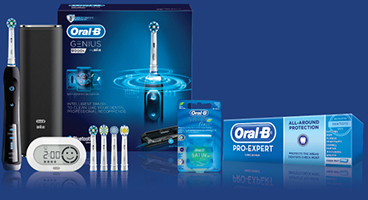The World Health Organization describes oral health as being free of chronic mouth and facial pain, oral and throat cancer, oral sores, birth defects such as cleft lip and palate, periodontal (gum) disease, tooth decay and tooth loss, and other diseases and disorders that affect the mouth and oral cavity.
8 facts and stats about dental cavities and oral disease
1. The most common oral diseases are dental cavities and periodontal (gum) disease.
2. 60 to 90% of school children worldwide have dental cavities.
3. Severe periodontal (gum) disease, which may result in tooth loss, is found in 5-20% of middle-aged adults; the rate varies across geographical regions.
4. Incidence of oral cancer ranges from one to 10 cases per 100 000 population in most countries.
5. Birth defects such as cleft lip and palate occur in around one per 500-700 of all births; the birth prevalence rate varies substantially across ethnic groups and geographical areas.
6. 40-50% of people who are HIV-positive have oral fungal, bacterial or viral infections, which often occur early in the course of HIV infection.
7. Traditional curative dental care is a significant economic burden for many high-income countries, where 5-10% of public health expenditure relates to oral health.
8. Oral diseases and chronic diseases can be decreased simultaneously by addressing common risk factors such as tobacco use and unhealthy diet:
- Decreased intake of sugars and well-balanced nutrition prevent tooth decay and premature tooth loss.
- Tobacco cessation and decreased alcohol consumption reduce risk for oral cancers, periodontal disease, and tooth loss.
- Fruit and vegetable consumption is protective against oral cancer.
- Effective use of protective sports and motor vehicle equipment reduces facial injuries.
What is good oral hygiene?
It is essential to take care of your teeth and engage in daily good oral hygiene. Good oral hygiene means teeth are clean and free of food debris, that gums are healthy and pink without pain or bleeding when brushing or flossing, and bad breath is not a factor. Oral care is vital to good oral health which is important to overall general health.
Daily oral care should include brushing and flossing to prevent problems from developing. Regular visits to your dentist are also very important as they can assist you in learning techniques to maintain good oral health. Your dentist and oral hygienist are able to identify potential problems before they become painful, worrisome and potentially expensive.
These simple steps aid in oral care:
- It is preferable to select a soft or extra soft bristle toothbrush to prevent the risk of harming the gums.
- Brush thoroughly at least twice a day, and especially before going to bed.
- Brush for at least two minutes at a time to ensure that all teeth are reached and food debris is removed.
- Too much brushing can damage gums.
- Do not apply too much pressure to the head of the toothbrush when brushing.
- Replace toothbrushes at least every three months.
- If toothbrush bristles are flaring it is time to replace the toothbrush and a possible indication that you are brushing too hard.
- Brushing the tongue removes bacteria in the oral cavity
- Floss at least once a day.
- Follow the curves of the teeth when flossing.
- Do not snap floss onto the gums when cleaning between teeth.
- Use toothpaste or dental care products which contain fluoride.
- Toothpastes have ingredients to assist with the prevention of decay, plaque and tartar control, gum care and sensitivity.
- Eat a balanced diet.
- Limit snacks.
- Visit your dentist regularly, especially if you’re experiencing pain or bad breath.
- Discuss fluoride supplement requirements for children under the age of 12 years with your dentist.
Should you use fluoride?
Dental cavities can be prevented by a low level of fluoride constantly maintained in the oral cavity. Fluoride can be obtained from fluoridated drinking water, salt, milk, mouth rinse or toothpaste, as well as from professionally-applied fluorides. Long-term exposure to an optimal level of fluoride results in fewer cavities in both children and adults.
By using these prevention strategies, the high cost of dental treatments can be avoided.
For more info
Visit the South African Dental Association’s website
IMAGE CREDIT: 123rf.com
FEATURED PRODUCT: Oral-B
The Oral Hygienist Association of South Africa (OHASA) has endorsed several Oral-B technologies designed specifically to prevent oral disease and maintain good oral health. Make use of the convenience of online shopping and buy from the Oral-B range NOW!


